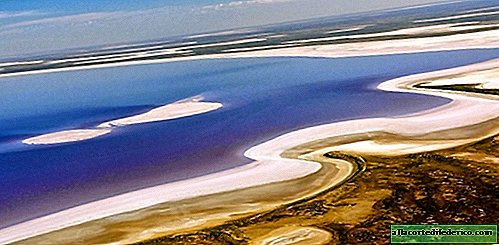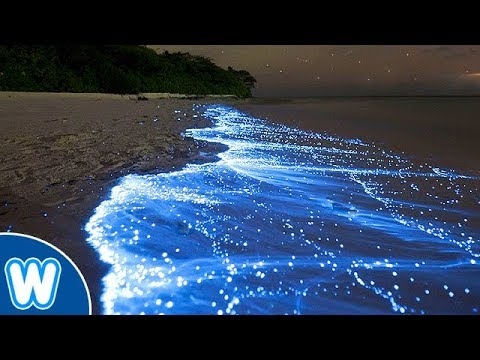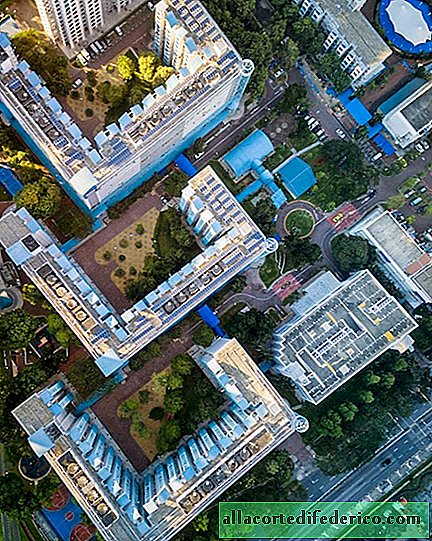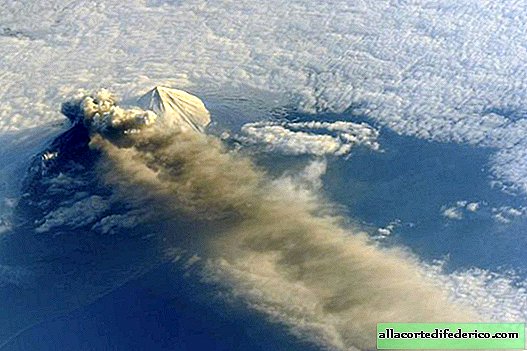The beauty of the endangered Eyre Lake in Australia
This pink salt lake is so transformed during the rainy season that it is almost impossible to recognize the lifeless saline space that existed here the previous six months. Perhaps, it is on the Australian Lake Eyre, like nowhere else in the world, that you can see how important fresh water is for life on our planet.

Lake Eyre is located in a vast drainage hollow in the middle of a desert area in the state of South Australia. This is a salt lake, into which several rivers flow into the short rainy season, drying up to complete disappearance after a few months. Following the dried up tributaries, the lake itself also begins to grind, the area of which greatly depends on the time of year. There are many similar lakes in the Australian deserts whose borders are indicated by a dotted line, but Lake Eyre is the largest in Australia.

This is a kind of phantom lake, which first appears, then almost completely disappears. But even during the long dry season, a little water remains in the lake.

The maximum area of the lake, which was recorded three times in the entire history of observation, is 9,500 square meters. km (for comparison, the area of Lake Ladoga is 17 870 sq. km, and the area of Issyk-Kul - 6 230 sq. km). The full-flowing season usually lasts from November to January, and then the lake begins to dry out gradually. During the wet season, the shores of Lake Eyre are a real paradise for birds. It is warm here, and the abundance of fish and other aquatic inhabitants attracts many birds, which breed here. One of the most famous inhabitants of the lake is the pelicans, who arrive on the lake as soon as the rivers that feed Ayr come to this desert area. It will seem incredible, but in the arid area surrounding Lake Eyre, there are even prolonged downpours, and then small rivers overflow, flooding everything around.

And here is a wonderful transformation of the surroundings of Lake Eyre after a long drought.
The lake and its surroundings take on a completely different look during the drought season, which usually begins in February-March and lasts until the end of autumn. The water level in the lake begins to fall, and the concentration of salt in it increases. Most species of lake fish gradually die from high salinity, and birds leave the shores of the reservoir in search of better places. During this period, most of the lake turns into a vast salt marsh, the surface of which sparkles in the sun. But even in this period of joyless for the lake, it looks amazingly beautiful.

Air Lake is divided into two parts: the small South Air and the vast North Air. They are connected to each other by the Goyder Channel. But sometimes it rains so little that the drought can last for several years, and then the lake turns into several isolated shallow reservoirs with a depth of about 1.5 meters.

The first European immigrant to explore and describe the lake was Edward John Eyre, in whose honor the lake got its name. But not so long ago, the local indigenous name was also added to this name, which the native people of Australia assigned to the pond long before the colonialists arrived. Now the official name of the lake looks like Kati Thanda-Lake Eyre, although on most maps you can still see the name "Air Lake" or "Air North Lake".

This unusual pond has a pink tint of water due to the presence of unicellular green algae with a very poetic name - brackish-water dunaliella (lat. Dunaliella salina). Algae secrete the pigment carotene, which gives the water a characteristic color.

Air Lake and the surrounding region are located on the territory of the national park, which was organized specifically for its protection and organization of excursion vacations. The lake is very popular among both Australian and foreign tourists, and flights over the lake are most in demand. It is during them that one can appreciate the stunning beauty of this unique place. Despite the instability of the water level, a yacht club successfully operates on Lake Eyre, and even in the dry season there is a place to go sailing.

And here is a bird’s eye view of the unique Eyre Lake.

















